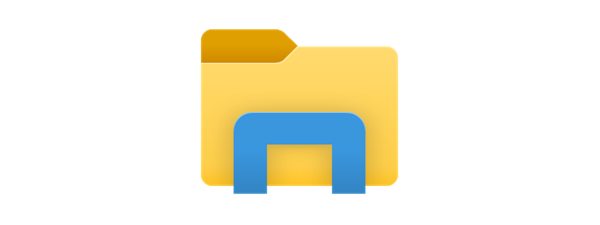
One of the biggest changes in Windows 8 is the fact that the Start Menu has been replaced by the Start Screen and now you have a very different way of launching applications. While the Start Screen is great for making instant searches and launching applications with a few keystrokes, it is not that friendly to users who love using the mouse instead of the keyboard. Therefore, I decided to make a quick analysis and see how the new Start Screen compares to the old Start Menu. Does it help in getting faster access to all the shortcuts installed by your applications? Let's find out!
NOTE: The analysis was updated for Windows 8 Release Preview. Unfortunately there are not many positive changes to report and the conclusions and recommendations of this article are the same as for the Windows 8 Consumer Preview.
The Applications Used for the Analysis
For my experiments, I chose a set of popular applications used by many Windows users: Mozilla Firefox, uTorrent, 7-Zip, Auslogics Disk Defrag, Notepad++, ImgBurn, Winamp, Dropbox, Mozilla Thunderbird, K-Lite Codec Pack, Skype, Adobe Reader X, Paint.NET, LibreOffice 3.5, Yahoo Messenger.
They were installed using their default options. Exceptions were made for software that wanted to install toolbars and other unwanted third-party software (e.g. Winamp and Yahoo Messenger). For those applications I did not allow the installation of any unwanted software.
The Windows 8 Start Screen
Windows 8 has replaced the Start Menu with the Start Screen. Its location in the Windows file system is the same though.
Both in Windows 7 and Windows 8, the folders and shortcuts that make up the Start Menu and the Start Screen are found in two folders: "C:UsersUser NameAppDataRoamingMicrosoftWindowsStart Menu" and "C:ProgramDataMicrosoftWindowsStart Menu".
This is how the Start Screen looks like after installing the applications I used for the analysis. I find it pretty crowded and disorganized.
When I right click and choose All apps, I get something very similar to the Start Menu in Windows 7. A much more organized structure of shortcuts, which looks a lot like the classic Start Menu experience.
The Windows 8 Desktop
Luckily, with the exception of the missing Start Menu button, the Desktop has remained unchanged in Windows 8, compared to Windows 7.
Also, their location in the file system is the same: "C:UsersUser NameDesktop" and "C:UsersPublicDesktop".
This is a screenshot of the Desktop, after installing all the applications I used for this analysis.
It looked the same in both operating systems and I was happy to see there were no differences.
Start Screen vs. Start Menu: How Many Shortcuts Are There?
I installed the same set of applications, with the same installation options on both Windows 7 and Windows 8 Release Preview. Then, I counted the number of shortcuts found in both operating systems. In the table below you can find the number of shortcuts installed by each application on the Desktop, the Windows 8 Start Screen and All apps list and in the Windows 7 Start Menu.
After counting all the shortcuts, I noticed that there are important differences between the number of shortcuts displayed on the Windows 8 Start Screen, the All apps list and the Windows 7 Start Menu:
- The Start Screen tends to display a smaller selection of shortcuts than what is installed by each application. The selection criteria seem to be random. For example, Winamp had its Uninstall shortcuts displayed while the other programs did not. Even programs which stored shortcuts in the same Start Menu folder as Winamp, did not have their Uninstall shortcuts displayed. Last but not least, K-lite Codec Pack installs a total of 20 shortcuts in its Start Menu folder in Windows 7 but only 6 in Windows 8. I am not sure if this behavior is a bug in the installation process or if in Windows 8 less features and tools are needed. Windows 8 Release Preview displays all 6 shortcuts installed by the tool.
- The shortcuts on the Start Screen are not organized in any way. They are simply added to the list of existing tiles shown on the Start Screen. You quickly end up having a pretty chaotic list of shortcuts. For example, if you look at the screenshot below, the shortcut for uninstalling Winamp is shown above the shortcut for running Winamp. Then, the LibreOffice Base application is in a separate group than the other LibreOffice shortcuts. Also, Paint.NET and Yahoo Messenger ended up in the same group with most LibreOffice shortcuts. It's pretty confusing to find your way between all these shortcuts. There is no obvious logic to the way they are grouped and listed. I even looked to see if the shortcuts are added in the order programs were installed. Unfortunately that doesn't happen either.
- The All-apps list is organized a lot better. Finding your way with the mouse is easier and less frustrating. The folder structure created by the applications in the Start Menu folders is respected and this leads to a better organisation and flow of the entire list.
- The All-apps list still misses a number of shortcuts and doesn't allow access to useful things such as uninstall shortcuts for some applications (e.g. ImgBurn). Again, the criteria for selecting which Uninstall shortcuts get displayed and which do not, seems random. It doesn't seem to have any connection to the folder location where they are stored.
What Microsoft Needs to Change About the Start Screen!
Looking at this experiment and the whole testing experience I had so far with the Windows 8 Start Screen, I find it poorly organized, inconsistent and sometimes confusing. I strongly believe Microsoft needs to make some serious changes and improvements, in order to provide a good experience. My top suggestions are the following:
- Microsoft should clarify the criteria based on which Windows 8 selects the shortcuts displayed on the Start Screen. I understand that showing all the shortcuts installed by applications doesn't help users and their number should be limited. However, the criteria used for the selection should be clear, consistent and well communicated to software developers.
- The Start Screen needs a better algorithm for grouping shortcuts. The way it is now, I find it lacking in efficiency and friendliness. Especially for users who are not very technical. Using the folders created by applications in the Start Menu folders and grouping them in a similar way to the All apps list might be better for users. Or, at least, group all shortcuts installed by an application in the same block of shortcuts.
- The All apps list should stop hiding shortcuts. It should display absolutely all shortcuts installed by applications in their Start Menu folders.
If these changes are made, I believe that people will need less time to accommodate with the new Start Screen. Combining its strong search features with a better organisation for those who prefer using the mouse, will make people feel at ease and never miss the old Start Menu.
Conclusion
I am curious to know what is your experience with the new Start Screen: Did you enjoy using it? Do you believe it needs some further tweaking? Do you agree with the points I raised in this article?
I am looking forward to having a constructive discussion on this topic.













